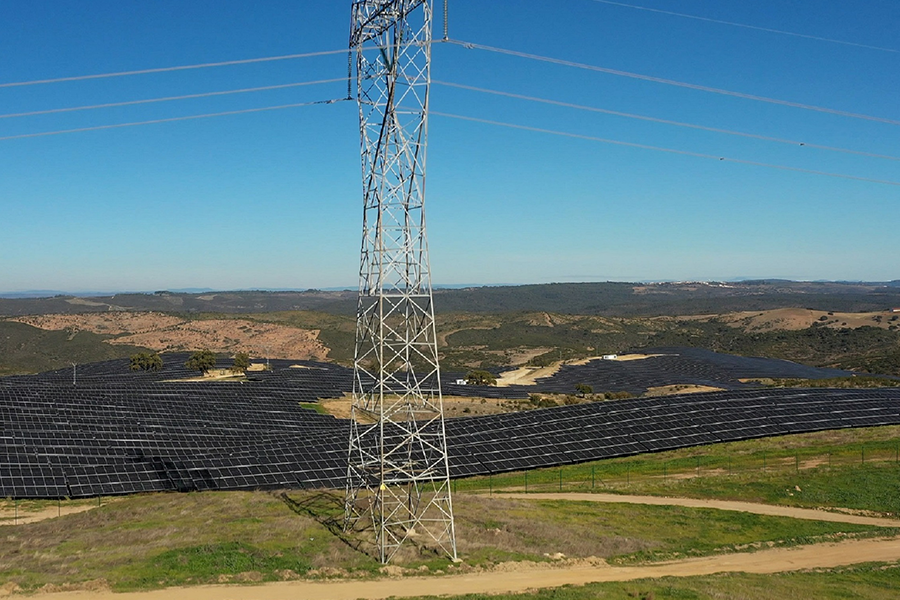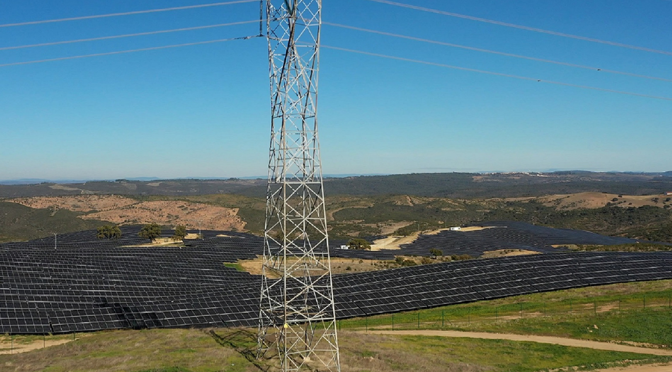- The facility will have a capacity of 86.4 megawatts (MW) and will have more than 160,000 photovoltaic modules.
- The company recently announced that it will also build Spain’s first hybrid wind power plant in Burgos.
Iberdrola España has obtained environmental approval for Spain’s first hybrid photovoltaic and hydroelectric plantExternal link, opens in new window. with the publication of the Environmental Impact Statement (EIS) in the Official State Gazette (BOE). Called HIDRO Cedillo, the project will be located in Cedillo (Extremadura) and will have a capacity of 86.4 megawatts (MW) with more than 160,000 photovoltaic modules and a fixed structure.
Hybridisation allows optimising the use of the grid and minimising the environmental impact of projects in the locations where they are located. By having two technologies capable of alternating, dependence on changing environmental conditions and limitations due to possible lack of resources such as wind or sunshine is significantly reduced, facilitating more stable and efficient renewable production.
The company, which has recently announced that it will also build Spain’s first hybrid wind-solar plant in Burgos, will invest in this technology in the coming years in the country with the aim of improving its renewable resources and making the most of existing locations.
Hybrid generation plants use the same grid connection point and share infrastructures, such as the substation and the evacuation line for the electricity produced. In addition, they are located on land that was already used for renewable generation and allow for common roads and facilities for the operation of both technologies. All of this results in a much lower environmental impact than two independent plants, which reinforces Iberdrola España’s innovative and renewable leadership in Spain.
HIDRO Cedillo: Respect for the environment
The project contemplates a series of measures for the protection of the environment, all framed within the promotion of the improvement of biodiversity in the surroundings.
In this way, to facilitate the availability of water in the different sectors of the solar photovoltaic plant, two additional pools or water points will be built. The construction of a watering trough for livestock and a system of naturalised ponds for the surrounding wildlife is also envisaged. It is planned to mark the exclusion zones that protect the river courses, the ponds, the unique vegetation, trees and habitats of interest around the large pond in the area.
Shelters for reptiles and amphibians have also been planned as protection areas during the most unfavourable periods of their life cycle and against their predators, as well as anti-collision barriers, some 600 metres long, to prevent amphibians from passing over the roadway along the edge of the pond area and on the sections of the paths inside and outside the solar photovoltaic plant.
In terms of birdlife, there will be a watchman to monitor and provide supplementary feeding for eight pairs of imperial eagles and golden eagles in the area. A dovecote for the promotion of prey species of birds of prey; a refuge for cave-dwelling bats on the banks of the Sever and to encourage the possible nesting and roosting of medium and large birds of prey in the vicinity of the solar photovoltaic plant are other measures contemplated in the project, which has already been approved by the environmental impact statement, according to the Official State Gazette.

Leader in renewables
The Iberdrola España group began its commitment to renewable energies more than two decades ago as a fundamental pillar on which to build its clean, reliable and competitive business model.
Thanks to this vision, the company is today a leader in renewable energy, with more than 21,000 MW of renewable capacity installed in Spain. Iberdrola España plans to install more than 7,600 MW of renewable energy capacity in the country over the next four years to accelerate the electrification of the economy and contribute to reducing energy dependence on foreign countries.
Extremadura has become one of Iberdrola España’s growth regions in Spain, with nearly 5,200 MW installed, 4,100 of which are renewable, including hydroelectric, solar and battery stations. Its clean energy plants are present in both Cáceres and Badajoz.
Progress in the region has been made in solar photovoltaic. The commercial operation of the Cedillo (375 MW), Majada Alta (50 MW) and San Antonio (50 MW) plants in Cáceres, a province where the Almaraz I and II photovoltaic plants (80 MW) have also started production.
Precisely in Cedillo, Iberdrola España has installed the first solar community for an entire village, which provides residents and traders who are members of the solar community with savings of 50% of their consumption through a self-consumption system.
This solar community has just been recognised as the best sustainability initiative in Europe by winning SolarPower Europe’s Solar Sustainability Award 2023, presented in Brussels in early December.


